- Home
- Stephen Baxter
Evolution Page 38
Evolution Read online
Page 38
In their mangrove swamp the ancestors of Harpoon, no better swimmers than Pebble, had been forced to find ways of crossing crocodile-infested water. After much trial and error — with every error punishable by maiming or death — they had hit on a way of using cut mangrove logs. You could ride on such a log by lying flat on it and paddling with your hands. Through all their journeying, the skinnies had not forgotten that basic technique. And that was what Pebble had seen the children trying to do out on their bits of driftwood. At last he saw a way to get to the island.
But paddling a log across the still waters of a mangrove swamp was one thing. Mastering the choppy surface of an ocean channel was a different challenge.
After a few spectacular failures, Ko-Ko’s inventive mind had come up with the notion of strapping two logs together. That way at least you got a little more stability. But these miniature rafts were still too vulnerable to tipping over.
At last they got the logs into the water. They floated, tied together to make a stable surface.
Ko-Ko and Hands threw themselves forward, splashing heavily. They both lay flat on the logs, legs stretched behind them, and began to paddle. Slowly they pulled away from the shore. But the waves tipped the logs up and down — and eventually over, pitching both men into the water. And then the logs’ bindings came loose.
Hands came staggering back, spluttering and growling. With Ko-Ko, he hauled the logs back out of the water onto the beach.
Pebble knew that there had been no danger, for the water here was shallow enough to walk out to shore. But further away it deepened quickly — and that was where they must travel, if they were to reach the island.
So they kept working, trying different combinations, over and over.
Much had changed in Pebble’s life in seven years.
Gradually those who had come with him from Flatnose’s village faded out of the world. Hyena had never recovered from his stab wound, and they had put him in the ground. And not long after that they had had to put Dust in the ground too. Gradually Pebble’s mother had seemed to have grown fond of Harpoon, this peculiar stranger who lay with her son. But at last her growing frailty overcame her strength of will.
But where life was lost, so new life was created. His two children were close in age — six and seven years old — but they were quite different.
Sunset was the younger, at six. The boy was the result of Pebble’s reluctant union with Cry, who had continued to pursue him long after he had formed his bond with Harpoon. Sunset was squat, round, a ball of energy and muscle, and above a thick, shadowing browridge his hair was still the startling red it had been when he was born, Ice-Age-sunset red.
Sunset had brought poor Cry no pleasure, though. She had died in giving him birth, to the end protesting about the presence of the new people among them.
Pebble’s other child, Smooth, had come from Harpoon. Though she had something of her father’s chunkiness, she was much more like her mother’s kind. Already she was taller than Sunset. Every time he saw her, Pebble was struck by Smooth’s flat face, and the ridgeless brow that swept up above her clear eyes.
Pebble had had no reason to be surprised when his sexual contact with Harpoon had resulted in a child. Now, in fact, she was pregnant again. The changes between the ancestral stock and Harpoon’s generation, though they were so striking, were not yet so fundamental that the two kinds of people could not crossbreed — and indeed their hybrid children would not be mules. They would be fertile.
Thus Harpoon’s modified genes, and her new body plan and way of life, had begun to propagate through the wider population of robust folk. Thus the thread of genetic destiny would pass on through Smooth, child of human-form and robust, into the future.
As the long afternoon wore on, driven by Pebble’s determination, they kept on trying to make the logs work.
It was frustrating. They had no way of discussing their ideas. Their language was too simple for that. And even the new folk were not particularly inventive with technology, for the compartment walls in their highly specialized minds denied them full awareness of what they were doing. They weren’t able to think it through. It was something like trying to learn a new body skill, like riding a bicycle; conscious effort didn’t help. And besides the work was uncoordinated, and only progressed when somebody was passionate enough to bully the rest.
But at last, quite suddenly, Ko-Ko hit on a solution. He splashed into the water. “Ya, ya!” With frantic yells and blows, he forced the swimmers to hold on to a single log and let it float. Then he went to the far end and, swimming strongly himself, guided the log out through the choppy inshore waves to the calmer waters beyond.
Pebble watched, amazed. It worked. Rather than riding the log, they used it as a float to help these nonswimmers swim. Soon the log was so far from the shore that all he could see was a row of bobbing heads and the black stripe of the log between them.
By clinging to the log and paddling for all they were worth even the robusts, too heavy to swim, were able to cross the water, far out of their depth. It was obvious to everybody that at last they had found a way to cross the strait that had baffled Pebble for years.
Pebble hollered his triumph. His sons ran to him. He picked up Smooth and whirled her, squealing, through the sunlit air, while Sunset pulled at his legs, clamoring for attention.
The raiding party landed on a little crescent of shell-strewn sand that nestled beneath walls of eroded blue-black rock. They staggered out of the water and lay gasping on the beach. Pebble saw immediately that everybody, robust and skinny alike, had made it to the shore.
The crossing had been harder than Pebble could have imagined. He would never be able to forget that awful sensation of being suspended over the blue-black depths where unknown creatures swam. But it was over now.
And already Ko-Ko was at work. Leading by example he was having the logs hauled to the shore. The warriors — a dozen robusts, a dozen skinnies — began to unpack their gear. Some of the weapons had been carried strapped to their backs or in pouches of netting, and some — the skinnies’ long throwing spears, for example — had been tied to the logs themselves.
Harpoon stroked her belly and gazed out to sea, back the way they had come. She touched the vertical ocher stripes on Pebble’s face, just as she had the first time they had coupled. But now she wore the same ferocious marking as he did — as did all the people, skinnies and robusts alike. He grinned, and she grinned back.
United by their symbols, two kinds of people prepared to make war on a third.
A woman cried out. Pebble and Harpoon whirled. A heavy basaltic rock had fallen onto the beach, pinning a skinny woman’s leg. When the rock was pulled away, her foot was revealed, a smashed and bloody mess. She began to keen, tears streaking the ocher stripes on her cheeks.
People were jabbering, pointing at the cliffs. “Hai, hai!”
Pebble peered up, shielding his eyes. Something moved up there: a head, narrow shoulders. The rock had not fallen, Pebble realized. It had been pushed, or thrown.
So it had begun. He grabbed his thrusting spear and roared defiance, and ran along the beach. The people followed him.
A few hundred meters along, this sheltered beach gave way to a more open stretch of dunes and grassland. And on the open land Pebble saw a group of wraithlike hominids. There were more than twenty of them — women, men, children, infants. They had gathered around the carcass of a fallen eland. When they saw Pebble they stood up, their heads swiveling.
Pebble hurled himself forward, yelling.
Some of the hominids turned and ran — mothers with infants, some of the men. Others stood their ground. They picked up rocks and began to hurl them at the intruders, as if trying to drive off marauding hyenas. These people were tall, slender, naked, their bodies superficially similar to Harpoon’s. But their heads were quite different, with squat forward-thrusting faces, strong browridges and flat crania.
They were a late variety of Homo erectus. This group ha
d wandered on to this island when a glacial surge had lowered sea levels sufficiently for it to be joined to the mainland. When the sea had returned, they had survived while the rest of their kind had fallen, because nobody else had figured out how to cross the choppy strait to take the island from them.
Nobody until now, that is.
One male, more burly than the rest, grabbed a huge, heavy hand ax and came running toward Hands. The big robust roared in response, his heavy thrusting spear grasped in his fists. With blurring speed the male sidestepped Hands’s charge and brought his hand ax slamming down on the back of Hands’s neck. Blood gushed, and Hands faltered and fell face first. Still he fought. He twisted on to his back, his blood soaking into the dirt, and he tried to raise his thrusting spear. But the big male stood over him, ax raised.
Pebble, enraged, drove his own spear hard through the male’s back. With this weapon Pebble was capable of piercing the hide and rib cage of a baby elephant, and he had little trouble driving his heavy spear point through hominid skin, ribs, heart. He raised the male’s body high, like a speared fish. It flopped, blood spouting from its mouth and back, and sticky crimson gushed down the spear’s shaft and over Pebble’s arms.
When it was done Pebble knelt beside Hands. But the big man was unmoving, his massively muscled limbs splayed in the dirt. Grief spasmed in Pebble: another companion gone. He stood up, his hands and arms running with blood, seeking the next battle.
But the wraithlike naked ones were running. The skinnies were hurling their spears of fire-hardened wood, spears that rained down on the fleeing hominids.
Pebble shuddered, grateful that it was not him who these skinnies were pursuing with such deadly joy. But he picked up his thrusting spear and ran after his allies, abandoning Hands’s body to the hyenas.
Systematic murder of one troop by another was common among many social and carnivorous species — ants, wolves, lions, monkeys, apes. In this, the behavior of the people was, as in many other things, no more than a derivation of deeper animal roots.
But among wolves, apes, pithecines, even the walkers, such campaigns had been inefficient. Without effective weapons, killings could be achieved only with overwhelming numbers, and it could take years for a war between two competing bands of thirty or forty pithecines to resolve itself. Even during the long age of the sedentary robusts, there had been little large-scale slaughter. Isolated strangers were killed, but there were no wars for lebensraum.
But now, as the genetic definition of Harpoon’s new nomadic people continued to spread, that was starting to change. Harpoon’s kind had accurate long-range weapons, and heads increasingly capable of systematic, orderly thinking; they were able to perform mass killing with unprecedented thoroughness. But there was a feedback effect. Warfare with other groups would force hominids to come together in increasingly large bands, with all the social complications that followed. The killing would shape the killers, too: If love was evolving, so was hate.
After cleaning out one particularly dense nest, Ko-Ko and the others had a kind of party. They dragged the bodies of the women, children, and men from the nest to an open space and piled them up — thirty, forty of them, all with ripped-open bellies, cleaved chests, smashed skulls. Then they began a fire, throwing burning branches onto the heap of bodies. Ko-Ko and the others danced around the burning corpses, whooping and hollering.
The skinny hunters dragged forward live captives. They were a mother and child, a spindly boy small enough to carry. The hunters had cornered her by a rock bluff where she had been trying to hide. Skinnies and robusts alike gathered around, hooting and yelling, and thrusting spears were raised before the mother’s face.
To Pebble the mother seemed numbed. Perhaps there was a kind of guilt written on that slim, protruding face. She had survived while others had fallen around her, all save her small child, and she was unable to feel anymore.
Ko-Ko stepped forward. With a simple efficient thrust, he drove the point of his thrusting spear into the woman’s chest. A black fluid burst from her skin. She convulsed — there was the too-familiar smell of death shit — and she slumped.
Still the infant lived. He was wailing, clinging to his mother and even trying to gnaw at her blood-streaked breast. But, just as a mother chasma had once pushed her pups toward hapless Elephant, so now Harpoon, her swollen belly proud before her, thrust Smooth toward the infant. Pebble’s daughter carried a stone chopping tool. With a lithe body so like her mother’s, she looked feverish, eager. And she raised the chopping stone over the infant’s flat skull.
Though he never shirked the fighting, the killing, suddenly Pebble longed to be away from here, sitting on a beach under a tall sunset, or digging for yams to bring home to his mother.
By the next morning the fire was burned out. The hominids had been reduced to gaunt skeletons, their blackened bodies wizened into fetal postures. Ko-Ko and Smooth stalked amongst the smoking remains, smashing them to pieces with the butts of their heavy thrusting spears.
CHAPTER 11
Mother’s People
Sahara, North Africa. Circa 60,000 years before present.
I
Mother walked alone, a slim, upright figure in a tabletop landscape. The ground was hot under her feet, the dust sharp and prickling. She came to a stand of Hoodia cactus. She crouched down, cut off a stem about the size of a cucumber, and munched on its moist flesh.
She went naked save for a bolt of eland leather tied round her waist. She had a shaped stone in one hand, but carried nothing else. Her face was fully human, her brow smooth and upright, her chin sharp. But her mouth was pinched and her eyes were sunken, her gaze darting suspiciously.
The savannah around her was arid, dismal. The empty shadowless flatness stretched away, dissolving into a ghostly heat haze that obscured the encircling horizon, a flatness broken only by an occasional drought-resistant bush or the remains of an elephant-trampled copse. There wasn’t even any dung to be seen, for the great herbivores passed rarely now, and the beetles had long done their tidy and efficient work.
Clutching the cactus stem, she moved on.
She reached the edge of the lake — or where its edge had been last year, or perhaps the year before that. Now the ground was dry, a patina of dark, heat-cracked mud so hard it didn’t crumble when she put her weight on it. Here and there scrubby grass, yellow white, clung to life.
She cupped her hands over her eyes. The water was still there, but far from where she stood, just a remote shimmer. Even from here she could detect the dank stench of stagnation. On the lake’s far side she glimpsed elephants, black shapes moving like clouds through the glassy heat haze, and animals rooting in the mud — warthogs, perhaps.
But on the lake’s clogged surface she made out waterfowl, a flock roosting peacefully at the center of the water, safe from the hungry predators of the land.
Mother smiled. The birds were just where she wanted them. She turned and walked back from the lake’s barren muddy aureole.
At thirty years old, Mother’s body was as lithe and upright as it had been in her youth. But her belly bore marks from the birth of her single child, her son, and her breasts sagged. Her buttocks were full; this was an adaptation to the long periods of drought, to help her store water in fat. Her limbs showed stringy muscles, and her belly showed none of the malnutritional swelling affecting many of the folk. She was evidently effective at the business of life.
But she couldn’t remember a time when she had been happy. Not even as a child, when she had been clumsy, slow to talk, slow to fit in. Not even when her son had been born, healthy and wailing.
She saw too much.
This drought, for instance. The clouds had gone away, which enabled the sun to beat down all day, which dried the land and made the water vanish, which made the animals die, which made the people go hungry. So the people went hungry because of the clouds. What she couldn’t figure out was what had made the clouds go away in the first place. Not yet.
This
was what she had a talent for: seeing patterns and connections, networks of causes and effects that intrigued and baffled her. Her talent for spotting causal links brought her no comfort. It was more a kind of obsessive suspicion. But it did help her get through life sometimes — like today.
She came to a baobab tree, and studied its twisted branches. She knew what she wanted to make — a boomerang, a curved throwing weapon — and she inspected the branches and buttresses, looking for a place where the grain of the wood and its growth direction matched the weapon’s final shape, as she could see it in her mind.
She found one slender branch that might work. With a brisk snap she broke it off close to where it joined with the tree. Then she sat down in the baobab’s scrap of shade, took her stone tool, stripped off the bark, and began to carve the wood. She turned her stone blade over and over in her hand to bring favored edges into use. This tool — not quite an ax, or a knife, or a scraper — was her current favorite. Because any tool she couldn’t make on the spot had to be carried, she had manufactured this one tool to do many jobs, and she had retouched it several times.
Soon she had produced a smoothly curved stick some thirty centimeters long, flat on one side and rounded on the other. She hefted the boomerang in her hand, assessed its balance and weight with a judgment born of long practice, and quickly scraped away a little excess.
Then she walked out of the baobab’s shade and around the perimeter of the lake’s muddy fringe. She found the place where she had stashed a net of plaited bark fiber a few days before. The net was undisturbed. She shook it clear of dust, and the beetles that gnawed its dry fibers.
She hung the net across two gaunt, conveniently placed baobabs so that it faced the lake. She had chosen this site, in fact, because of the baobabs.
Now she walked back around the lake, until she was sideways when compared to the position of her net. She took her throwing stick. Her tongue protruding, she hefted it, rehearsing the throw she would make. She would get only one shot at this, and she had to get it right.

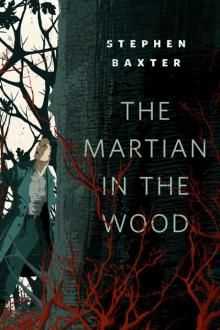 The Martian in the Wood
The Martian in the Wood THE H-BOMB GIRL
THE H-BOMB GIRL World Engine
World Engine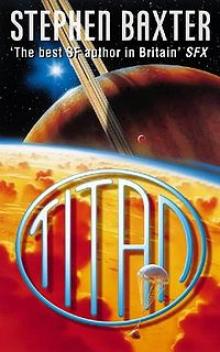 Titan n-2
Titan n-2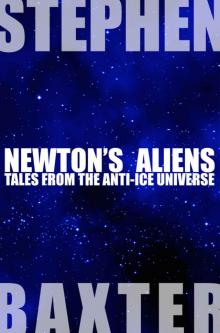 Newton's Aliens: Tales From the Anti-Ice Universe
Newton's Aliens: Tales From the Anti-Ice Universe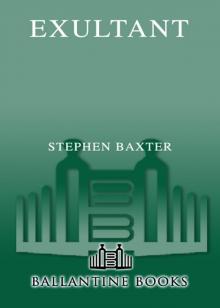 Exultant
Exultant Manifold: Origin
Manifold: Origin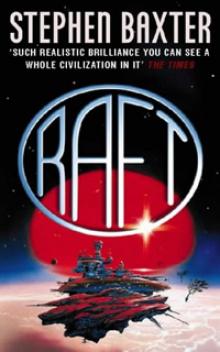 Raft xs-1
Raft xs-1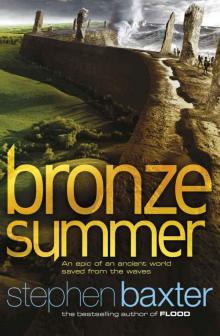 Bronze Summer n-2
Bronze Summer n-2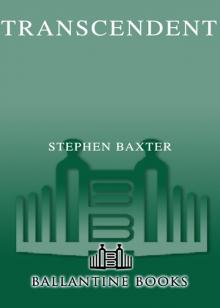 Transcendent
Transcendent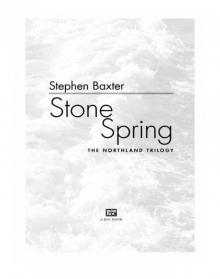 Stone Spring
Stone Spring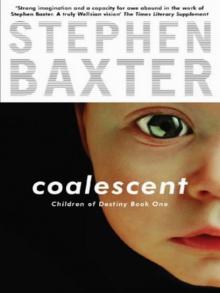 Coalescent
Coalescent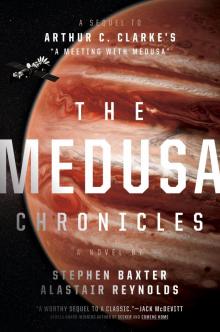 The Medusa Chronicles
The Medusa Chronicles Origin m-3
Origin m-3 Silverhair tm-1
Silverhair tm-1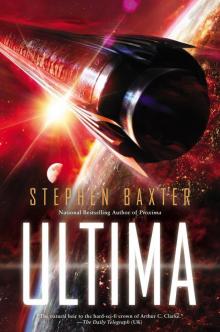 Ultima
Ultima Voyage n-1
Voyage n-1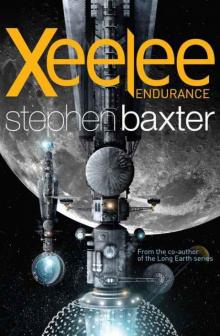 Xeelee: Endurance
Xeelee: Endurance Space m-2
Space m-2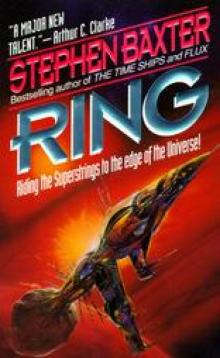 Ring xs-4
Ring xs-4 Raft
Raft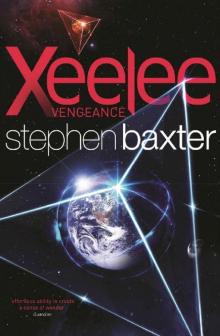 Xeelee: Vengeance
Xeelee: Vengeance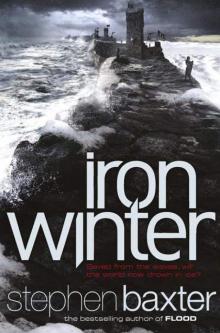 Iron Winter n-3
Iron Winter n-3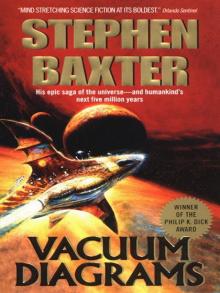 Vacuum Diagrams
Vacuum Diagrams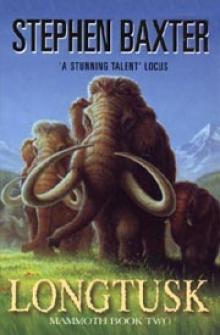 Longtusk tm-2
Longtusk tm-2 Proxima
Proxima Evolution
Evolution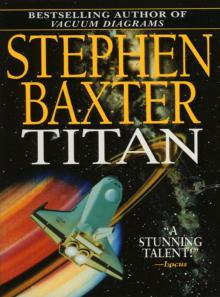 Titan
Titan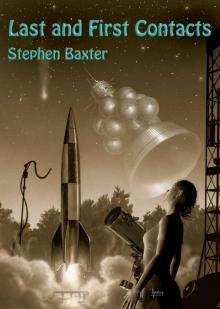 Last and First Contacts (Imaginings)
Last and First Contacts (Imaginings)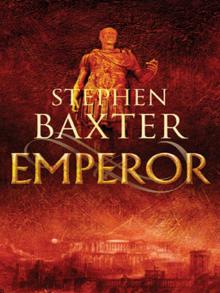 Emperor
Emperor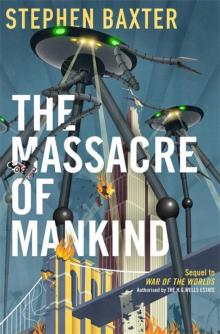 The Massacre of Mankind
The Massacre of Mankind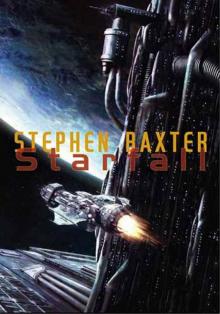 Starfall
Starfall Doctor Who - The Wheel of Ice
Doctor Who - The Wheel of Ice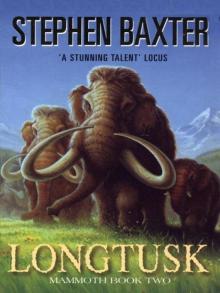 Longtusk
Longtusk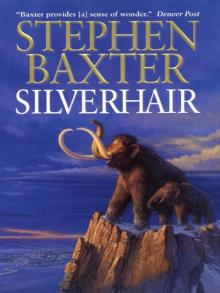 Silverhair
Silverhair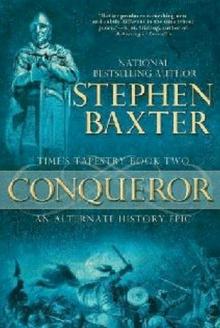 Conqueror tt-2
Conqueror tt-2 Flood
Flood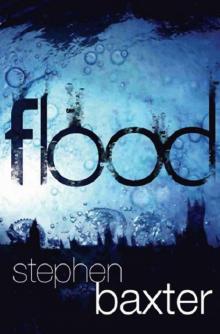 Flood f-1
Flood f-1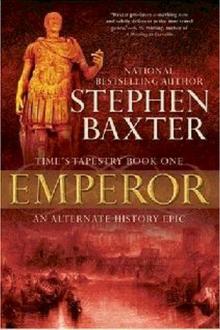 Emperor tt-1
Emperor tt-1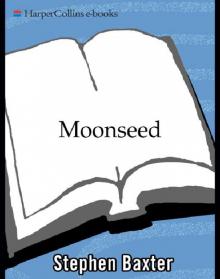 Moonseed
Moonseed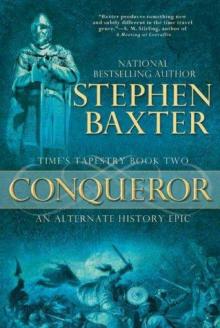 Conqueror
Conqueror Timelike Infinity xs-2
Timelike Infinity xs-2 The Ghost Pit
The Ghost Pit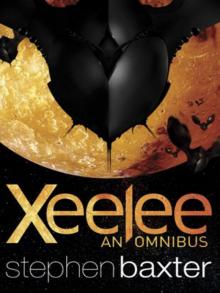 Xeelee: An Omnibus: Raft, Timelike Infinity, Flux, Ring
Xeelee: An Omnibus: Raft, Timelike Infinity, Flux, Ring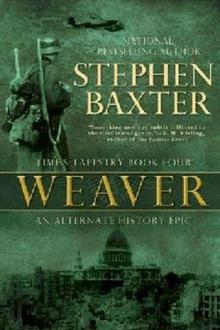 Weaver tt-4
Weaver tt-4 Landfall: Tales From the Flood/Ark Universe
Landfall: Tales From the Flood/Ark Universe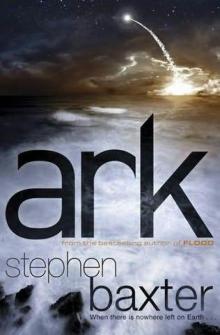 Ark
Ark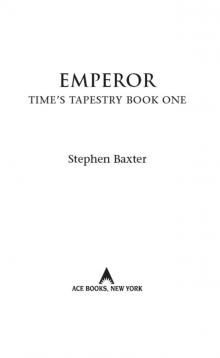 Emperor: Time’s Tapestry Book One
Emperor: Time’s Tapestry Book One Space
Space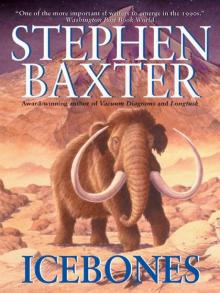 Icebones
Icebones Manifold: Space
Manifold: Space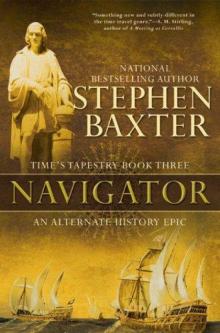 Navigator
Navigator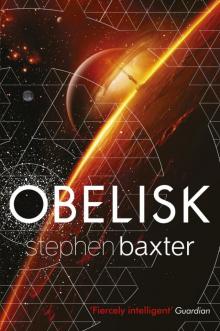 Obelisk
Obelisk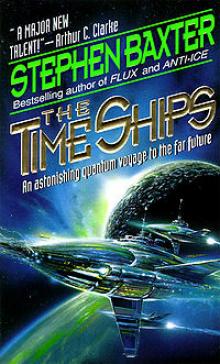 The Time Ships
The Time Ships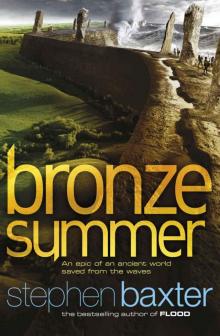 Bronze Summer
Bronze Summer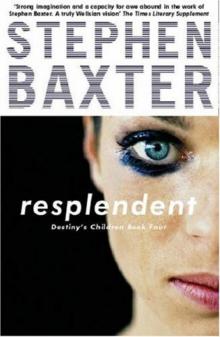 Resplendent
Resplendent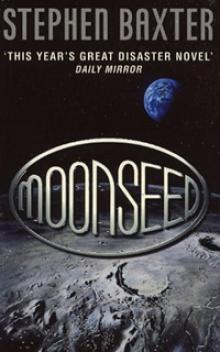 Moonseed n-3
Moonseed n-3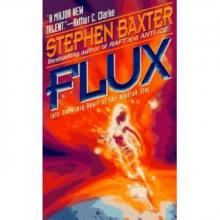 Flux xs-3
Flux xs-3 Transcendent dc-3
Transcendent dc-3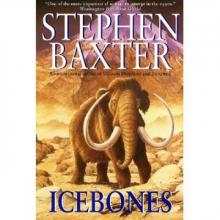 Icebones tm-3
Icebones tm-3 Phase Space
Phase Space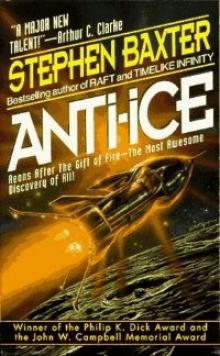 Anti-Ice
Anti-Ice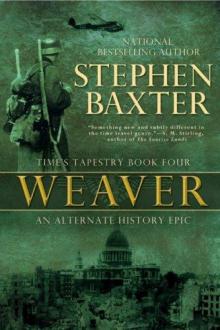 Weaver
Weaver Voyage
Voyage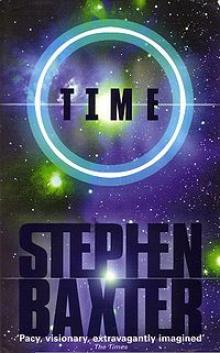 Time m-1
Time m-1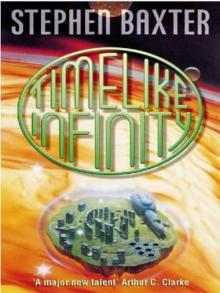 Timelike Infinity
Timelike Infinity Exultant dc-2
Exultant dc-2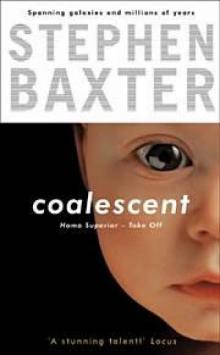 Coalescent dc-1
Coalescent dc-1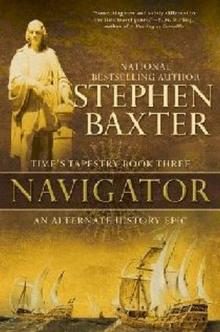 Navigator tt-3
Navigator tt-3